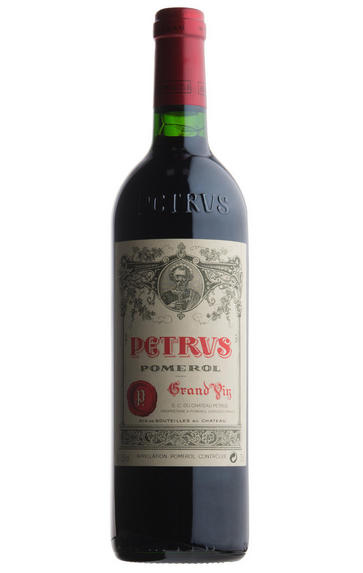
2013 Petrus, Pomerol, Bordeaux
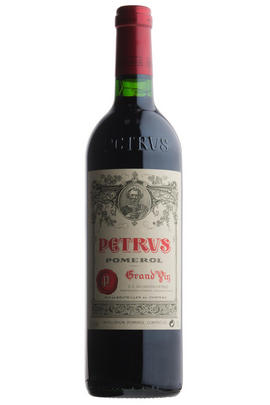
Critics reviews
The 2013 Petrus has a somewhat dour nose, and compared to the Lafleur, it lacks fruit intensity and freshness. There is an underlying herbaceous element here. The palate is medium-bodied with somewhat dry tannins, moderate weight and fine acidity. Given the peppery finish, you might presume there was some Cabernet Franc in the blend. But it is a bit facile within this estate's pantheon of great wines.
Drink 2023 - 2030
Neil Martin, Vinous.com (August 2023)
The 2013 Pétrus possesses lovely depth and density for the year. Dark red stone fruits, tobacco, smoke and graphite all blossom in the glass. Underlying beams of firm tannin support the fruit nicely. Violets, game, plums and new leather wrap around the finish. Today, the tannins are a bit firm, especially within the context of the vintage, but the wine retains solid balance and has plenty of potential to grow, even if it isn't especially flattering today.
According to Olivier Berrouet, poor weather at the end of June was the most critical time of the growing season at Pétrus. The irregular flowering resulted in a loss of 35-40% of the potential crop. Berrouet opted for gentle extractions, although Pétrus remains one of the most outwardly tannic wines of the year at this stage. The 2013 is ageing in 50% new oak and will probably be bottled a little earlier than normal.
Antonio Galloni, Vinous.com (April 2014)
100% Merlot
Bright, dark ruby. Captivating, extremely pure aromas of fresh blackcurrant, mocha, gunflint and violet. Precise and multilayered, with small dark berry flavours given clarity and cut by lively, harmonious acidity. The finish is complex and very long. Lighter than usual but extremely pure and perfumed, this knockout wine has silkier, smoother tannins than any other 2013 Bordeaux. When I visited Petrus in July 2013, the horrible growing season had Olivier Berrouet fretting like I had never seen before, but he can be proud of what he has achieved in this difficult vintage. Making a great Petrus in outstanding years like 2009 or 2010 is expected, so in some respect, this is Berrouet's best wine yet.
Ian D'Agata, Vinous.com (May 2014)
In contrast to many estates, Petrus believes ‘above all you should not chaptilise; you need to take what nature gives you and make the most of it. Nature is the boss’. These were the words of winemaker Olivier Berrouet when I was tasting the En Primeur version of this wine, and it was clearly a sensible choice because it still feels unforced and full of pleasure at ten years old.
You’ll find both grip and character, the tannins offering finely-boned architecture for the blueberry and blackberry fruit, and there’s a kick of life through the finish. Confident, deft winemaking and, in many ways, an excellent way to approach Petrus and understand a little bit what it is about - although the price difference from other vintages doesn’t reflect the difference in concentration and ageing potential.
Harvest took place over three days, 2-4-6 October, bringing in a yield of 25 hl/h compared to 33 hl/h in 2012.
Drink 2023 - 2036
Jane Anson, JaneAnson.com (February 2022)
The 2013 is a star of the vintage. It exhibits a dense purple colour along with deep mulberry, black cherry and black currant fruit intermixed with a notion of liquorice. Medium-bodied with supple tannins, it reminds me of their over-achieving 1973 in its youth (a wine that transcended the vintage character). The lovely, seductive, fruit-forward 2013 will be drinkable in several years and last 10-15 years thereafter.
The harvest took place on October 2-3, and tiny yields of 20 hectoliters per hectare have produced only 1,000 cases (rather than the normal 2,000-3,000). While winemaker and administrator Olivier Berrouet told me 300 vines of Cabernet Franc remain in the vineyard, for all intents and purposes, Petrus has been 100% Merlot for many years.
Drink 2014 - 2029
Robert M. Parker, Jr., Wine Advocate (August 2014)
Shaded crimson. There's something quite animal about the nose, and the palate is much more jagged than Lafleur's. Maybe it's still evolving, but there's quite a bit of dry tannin, and this seems like it still needs to be ready.
Really quite unformed and chunky. However, there is an undertow of complex fruit. Youthful. An extraordinary price!
Drink 2024 - 2034
Jancis Robinson MW, JancisRobinson.com (February 2023)
Very fine and structured with ultra-fine tannins. Medium-bodied with beautiful density and texture. It has length and grip for the vintage.
Drink from 2020 onward
James Suckling, JamesSuckling.com (February 2016)
The difficulties of the vintage are hardly evident here. Very deep in colour, the wine is dense and opulent on the nose, with black cherry aromas. It's ripe, solid, rich, and concentrated, showing ample force and extraction. For 2013, it's powerful, has some grandeur, and is quite unlike the other Pomerols here. Spicy, imposing and long.
Drink 2023 - 2032
Stephen Brook, Decanter.com (February 2023)
About this WINE
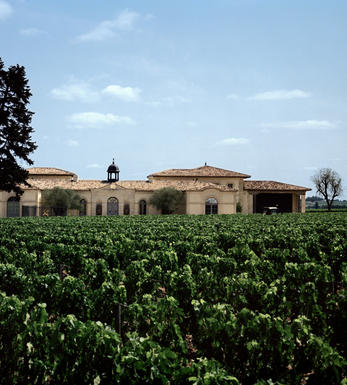
Petrus
Petrus is a wine estate in Pomerol on the Right Bank of Bordeaux. It is among the most celebrated and recognisable wines in the world.
While the estate can trace its history to at least 1837, it flew relatively under the radar until around the 20th century. Madame Loubat, who became the sole owner in 1945, felt that the estate was truly special, and her efforts were instrumental in establishing Petrus on the world stage. She also appointed Jean-Pierre Moueix as the exclusive agent; he and his sons Jean-François and Christian were key in building the estate’s modern reputation. The Moueix family became majority owners here in 1969. In 2018, they were joined by American-Colombian Alejandro Santo Domingo, who purchased a 20% stake.
Petrus is located atop the Pomerol plateau. Most of its vines sit on a so-called “buttonhole” of blue clay soil, known as smectite. This soil’s ability to retain water is a huge benefit in the Pomerol appellation, where drought is a known issue. The vineyard is planted mostly to Merlot.
The estate is run today by winemaker Olivier Berrouet, previously of neighbouring Château Cheval Blanc. Olivier joined in 2008, taking over from his father, Jean-Claude, who had produced 44 vintages of Petrus in his time.
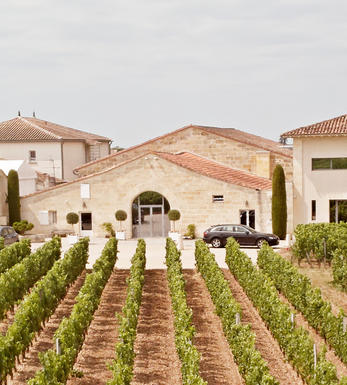
Pomerol
Pomerol is the smallest of Bordeaux's major appellations, with about 150 producers and approximately 740 hectares of vineyards. It is home to many bijou domaines, many of which produce little more than 1,000 cases per annum.
Both the topography and architecture of the region is unremarkable, but the style of the wines is most individual. The finest vineyards are planted on a seam of rich clay which extends across the gently-elevated plateau of Pomerol, which runs from the north-eastern boundary of St Emilion. On the sides of the plateau, the soil becomes sandier and the wines lighter.
There is one satellite region to the immediate north, Lalande-de-Pomerol whose wines are stylistically very similar, if sometimes lacking the finesse of its neighbour. There has never been a classification of Pomerol wines.
Recommended Châteaux : Ch. Pétrus, Vieux Ch. Certan, Le Pin, Ch. L’Eglise-Clinet, Ch. La Conseillante, Ch. L’Evangile, Ch. Lafleur, Trotanoy, Ch. Nenin, Ch. Beauregard, Ch. Feytit-Clinet, Le Gay.
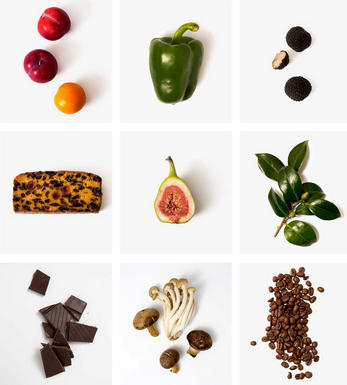
Merlot
The most widely planted grape in Bordeaux and a grape that has been on a relentless expansion drive throughout the world in the last decade. Merlot is adaptable to most soils and is relatively simple to cultivate. It is a vigorous naturally high yielding grape that requires savage pruning - over-cropped Merlot-based wines are dilute and bland. It is also vital to pick at optimum ripeness as Merlot can quickly lose its varietal characteristics if harvested overripe.
In St.Emilion and Pomerol it withstands the moist clay rich soils far better than Cabernet grapes, and at it best produces opulently rich, plummy clarets with succulent fruitcake-like nuances. Le Pin, Pétrus and Clinet are examples of hedonistically rich Merlot wines at their very best. It also plays a key supporting role in filling out the middle palate of the Cabernet-dominated wines of the Médoc and Graves.
Merlot is now grown in virtually all wine growing countries and is particularly successful in California, Chile and Northern Italy.


Buying options
Add to wishlist
Description
The difficulties of the vintage are hardly evident here. Very deep in colour, the wine is dense and opulent on the nose, with black cherry aromas. It's ripe, solid, rich, and concentrated, showing ample force and extraction. For 2013, it's powerful, has some grandeur, and is quite unlike the other Pomerols here. Spicy, imposing and long.
Drink 2023 - 2032
Stephen Brook, Decanter.com (February 2023)
wine at a glance
Delivery and quality guarantee